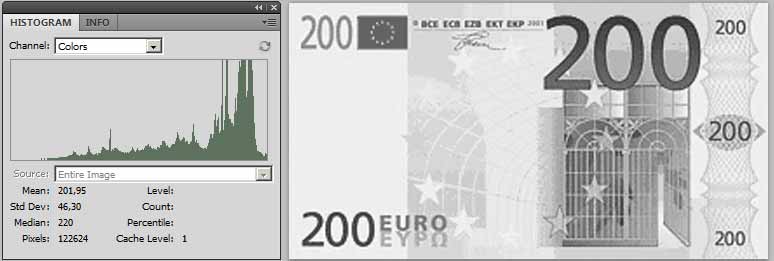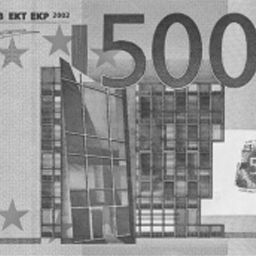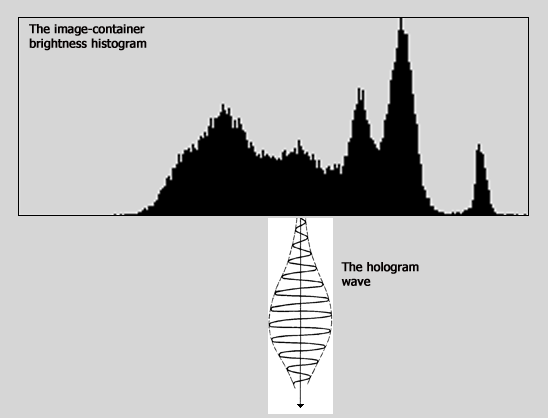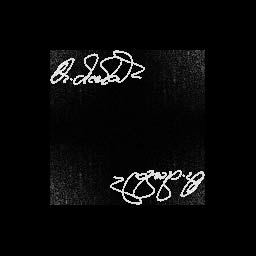To help ATMs - protection technology via banknotes hidden water marks
 In mid-October 2013 in Moscow, many users are faced with the refusal of ATMs of several major banks
take five thousandth bills through its ATMs. A little later, it turned out that this was due to the activities in Moscow
a gang of counterfeiters, who without hesitation, printed on a black and white copier 5-thousandths bills and pasted
over the makeshift security features.
In mid-October 2013 in Moscow, many users are faced with the refusal of ATMs of several major banks
take five thousandth bills through its ATMs. A little later, it turned out that this was due to the activities in Moscow
a gang of counterfeiters, who without hesitation, printed on a black and white copier 5-thousandths bills and pasted
over the makeshift security features.
Why ATMs have taken the black and white fake bills for real? It's very simple - they were pasted elements of protection and automatic analyzers ATMs perceived these papers as authentic! This is a good example of the lack conditional dependence between the object and the means of protection. This shortcoming affects many ways to protect your documents. Such as protection in the form of hologram stickers, embossed, vpressovyvaniya metal wire and others. Substitution of object identification, while maintaining the "surface " of the security element, does not lead to a conclusion about a fake document.
However, the production of banknotes used a sophisticated way to protect both the "shift effect" that provides surveillance hidden letters "PP" or apply hidden Moire patterns that occur when you lean cuts. The above methods are characterized as effective hidden means of defense, but unsuitable for implementation in automatic detectors the authenticity of banknotes. The most important device ATMs operating in the receive mode of cash, are automatic detectors, which are supplied the optical sensors for monitoring card watermarking optically banknotes absorbance of banknotes, programmable analyzers pattern and spatial spectrum (Fourier) Image bills, etc. It is known that, even banknote counters "Speed" table 16 have levels of sensitivity in detecting mode, the optical density of banknotes. Examples of histogram quantization levels (digital representation of the optical density) photos banknote is shown below:

Arsenal above methods of protection is quite impressive and is quite suitable for the implementation of technology hide protective elements in the " body" of images of banknotes. Paper bills, while must have sufficient optical density range ( quantization levels ). Hidden protective elements may be regulated list of visual data: serial number of the banknote denomination notes, the date of manufacture of the banknote, a facsimile of the responsible person, Repeat pattern or watermark banknote. One such technology allows to embed in the image on paper or plastic carriers hidden watermarks (HWM) as an analogue holograms.
In accordance with this technology (Embedding HWM: holographic approach), the container ( "body" ) banknote image is being implemented hologram hidden of the security element. Visually, a sufficient increase Image container, it is possible to observe an interference pattern similar in appearance to the moire stripes. An example of such a pattern is shown in an enlarged fragment images deposited on a plastic carrier:

The following figure shows a photograph of a fragment banknote with built hidden data in facsimile:

Below is a histogram of the brightness of the image of the bill of 500 euros:

Illustration of the principle of embedding a hologram HWM in the image container. The hologram is embedded in the range of average values of the histogram of brightness in such a way that the scope of the "wave" of the hologram does not go beyond the range of the histogram.
At the stage of the bill validator to recover hidden data necessary to make a two-dimensional transformation Fourier hologram and performing a spatial sampling. In real time, this procedure is implemented using digital signal processors (DSPs) for the fraction of a second. The recovery process hidden data can be observed as the restored object and its holographic Image. The figure below shows the result of a reconstruction of the hologram facsimile:

Conclusion. The technology brings together the identity of the object (the image on the banknotes) and Remedies (HWM) in a single unit. Event object substitution fake identification becomes conditionally dependent regarding protection - HWM. Thus, in response to the lack of HWM is the conclusion of a fake script. If you add cryptographic security HWM, it will attempt to break useless on a practical level.
It should be noted that the fraudsters [1] do not even hide the absence of the conditional dependence, namely “... first watermarks and infrared marks are printed on one machine on both sides, then on the other machine above everything else is applied, also on both sides, ie the picture, the numbers, and of course the UV marks are applied directly over the "rainbow hologram".
 |
The picture shows a metallized strip pasted on top of a fake banknote [1].
[1] "Fake money for ATMs" - https://news.mail.ru/
incident/40518963/
What remains to be seen about the HWM:
- Protection technology of photographic documents: passport, bank card
- Theory. Holographic approach to embedding... Download ==> http://smirnov.spb.su [PDF Download, 2 Mb, rus]
- M. V. Smirnov, "Holographic approach to embedding hidden watermarks in a photographic image," J. Opt. Technol. 72, 464-468
- Simulation, synthesis and visualization of Fourier holograms, rus